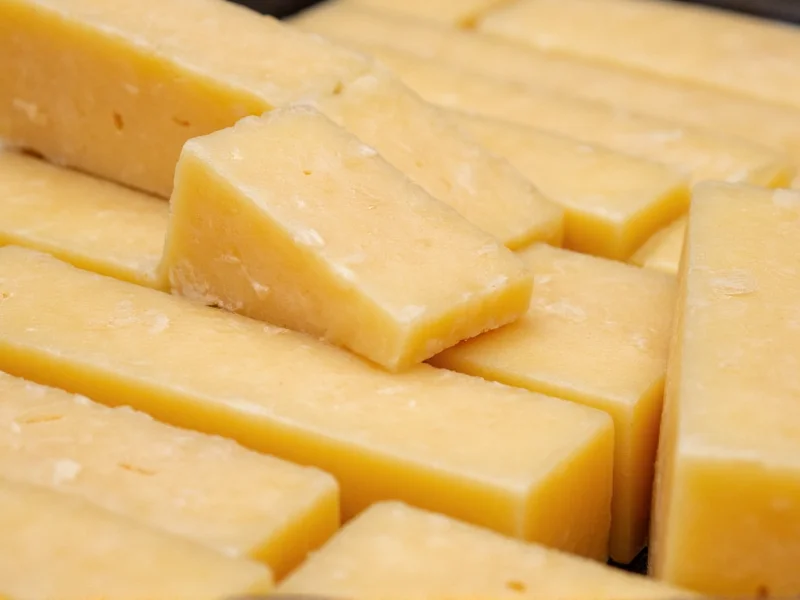Authentic Parmigiano-Reggiano does not strictly require refrigeration when whole and unopened due to its low moisture content and high salt concentration. However, once cut or opened, refrigeration significantly extends freshness and prevents mold growth. Grated Parmigiano-Reggiano must always be refrigerated after opening for optimal quality and safety.
Understanding how to properly store Parmigiano-Reggiano—the king of Italian cheeses—can make the difference between enjoying its complex nutty flavor for months or dealing with premature spoilage. This aged cheese, protected by Italy's DOP (Denominazione di Origine Protetta) designation, has unique preservation properties that set it apart from most dairy products.
Why Parmigiano-Reggiano Defies Typical Cheese Storage Rules
Parmigiano-Reggiano undergoes a minimum 12-month aging process (often 24-36 months), during which most moisture evaporates. With only 30% moisture content compared to 60-70% in softer cheeses, it naturally resists bacterial growth. The high salt concentration from the brining process further creates an inhospitable environment for pathogens.
Food scientists at the Consorzio del Formaggio Parmigiano-Reggiano confirm that a whole, vacuum-sealed wheel maintains stability at room temperature thanks to its protective rind. However, once that protective barrier is broken by cutting, the internal cheese becomes vulnerable to moisture loss and mold.
Storage Guidelines by Product Form
Proper storage depends entirely on how your Parmigiano-Reggiano is packaged and whether it's been opened:
| Product Form | Room Temperature Storage | Refrigerated Storage | Freezer Storage |
|---|---|---|---|
| Whole uncut wheel (vacuum-sealed) | 2-3 weeks | 6-12 months | 18+ months |
| Solid piece (cut from wheel) | 2-3 days | 4-6 weeks | 6-8 months |
| Pre-grated (unopened) | Until "best by" date | 2-3 months past date | 6 months |
| Pre-grated (opened) | Not recommended | 1-2 weeks | 1 month |
Optimal Refrigeration Techniques for Cut Parmigiano-Reggiano
When refrigerating cut Parmigiano-Reggiano, proper wrapping technique matters more than temperature alone. Cheese experts recommend:
- Wax paper method: Wrap the cheese first in wax paper, then loosely in plastic wrap or aluminum foil. This allows the cheese to breathe while maintaining humidity.
- Avoid direct plastic contact: Never store Parmigiano-Reggiano directly against plastic wrap, which traps moisture and encourages mold growth.
- Cheese paper alternative: Specialty cheese paper creates the ideal microclimate for aged cheeses.
- Temperature zone: Store in the vegetable drawer (typically 34-38°F/1-3°C) rather than the main compartment.
Signs Your Parmigiano-Reggiano Has Spoiled
Unlike many cheeses, Parmigiano-Reggiano develops harmless white crystals (tyrosine) during aging. Don't confuse these with spoilage indicators. Watch for these actual warning signs:
- Widespread mold (small surface spots can be cut away)
- Ammonia-like odor
- Excessive dryness or crumbling
- Darkening color beyond normal aging
According to University of Wisconsin-Madison's Center for Dairy Research, surface mold on hard cheeses like Parmigiano-Reggiano isn't dangerous—simply cut away at least 1 inch around and below the mold spot.
Common Misconceptions About Parmesan Storage
Several widespread myths persist about storing this premium cheese:
- "All Parmesan must be refrigerated": Only applies after cutting or opening. Whole wheels can safely sit at room temperature.
- "Freezing ruins Parmesan": Freezing actually preserves flavor well when done properly (grate before freezing in airtight containers).
- "Refrigeration prevents all mold": Even refrigerated Parmigiano-Reggiano can develop surface mold due to its natural aging process.
- "Pre-grated Parmesan lasts indefinitely": The anti-caking agents in pre-grated versions actually accelerate flavor loss compared to freshly grated.
Maximizing Flavor and Shelf Life
For the best culinary experience with your Parmigiano-Reggiano:
- Always buy whole pieces and grate as needed—this preserves complex flavor compounds
- Store cut pieces with a slice of apple or bread to regulate humidity
- Bring refrigerated cheese to room temperature 30 minutes before serving
- Never store near strong-smelling foods (cheese readily absorbs odors)
The Consortium for Parmigiano-Reggiano reports that properly stored cheese continues developing flavor even during refrigeration, though at a slower rate than at room temperature. This makes refrigeration a practical compromise between preservation and flavor development for most home kitchens.











 浙公网安备
33010002000092号
浙公网安备
33010002000092号 浙B2-20120091-4
浙B2-20120091-4